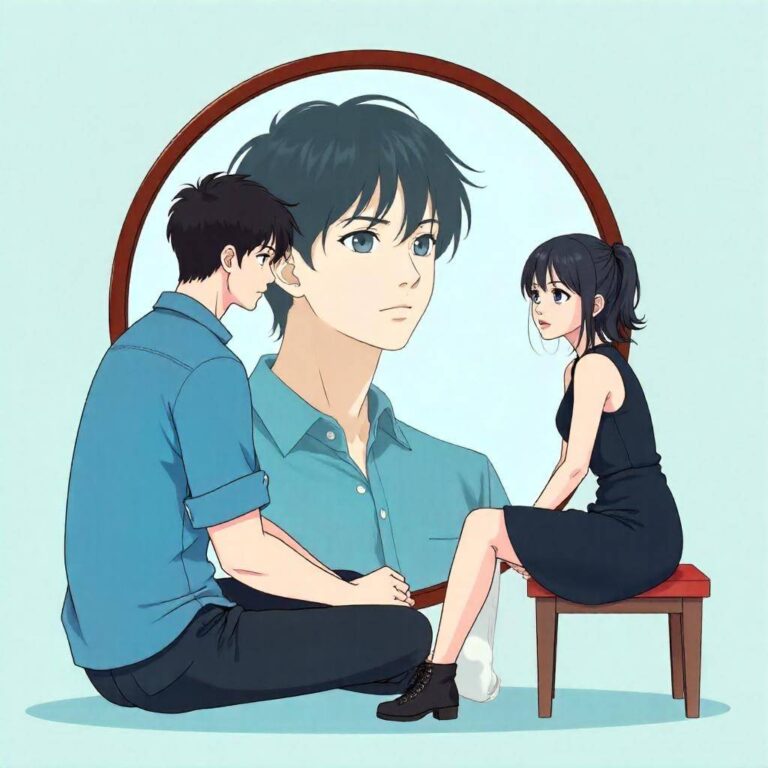Reader’s Question:
I have a question about “Takopi’s Original Sin.” Please avoid spoilers if you haven’t seen the final episode. 1. I watched the final episode and I think I understand most of it, but can I interpret the ending as a world where Higashi-kun, after fighting with his brother, makes
friends, no longer clings to his mother, and has no interaction with Shizuka-chan (meaning he doesn’t have feelings for her)? 2. Both Shizuka-chan and Marina-chan were alone from the beginning, but can I interpret that by the end, they support each other and are no longer alone? 3. Since Marina-chan has a scar on her face, does that mean the root cause hasn’t been eliminated, but they were still able to find happiness? 4. I’ve seen people describe the ending as either a happy or a bad one. Ultimately, the root cause isn’t gone, and while Takopi sacrificed himself, the three of them are smiling and happy. But it still feels sad. Would you classify this as a “bittersweet” ending?
Exploring the Bittersweet Ending of “Takopi’s Original Sin”
As I sat there, glued to my screen for the final episode of “Takopi’s Original Sin,” I felt a whirlwind of emotions flood through me. Let me tell you, it was a rollercoaster! I’ve been mulling over various interpretations of the ending, so when this reader’s question popped up, I couldn’t resist diving in. Spoiler alert: I won’t spill the beans on any major plot twists, but I’ll definitely share my thoughts on what went down.
Did Higashi-kun Succeed in Moving On?
First off, let’s talk about Higashi-kun. The idea that he fights with his brother, finds friends, and lets go of his mother’s clutches is so compelling. In a way, it feels like a coming-of-age story wrapped up in a chaotic package. I mean, can you imagine the weight lifted off his shoulders? He’s no longer just that kid stuck in a cycle of jealousy and longing. The change in how his peers address him—from “Higashi-kun” to “Naoki-kun”—is a clear indicator that he’s on the path to forming healthier relationships. It’s like he’s shedding old skins and stepping into a brighter future! But then again, I can’t help but wonder if he truly does let go of his feelings for Shizuka-chan. I mean, does he really move on if he’s just bypassing those feelings instead of processing them? It’s complicated, like the tangled strings of your favorite old headphones. But I definitely feel that he’s in a better place emotionally, even if it’s a bit of a stretch to say he’s completely healed.
Are Shizuka-chan and Marina-chan No Longer Alone?
Now, let’s move on to Shizuka-chan and Marina-chan. I love the idea that these two girls, who have battled their own loneliness, find a sense of camaraderie by the end. There’s something so powerful about the strength of friendship, especially when it stems from shared pain. They’ve been through the wringer, and seeing them support each other is like a warm hug on a cold day—necessary and beautiful. I can totally picture them sitting together and exchanging stories about their families. You know, like those late-night talks where you reveal secrets you thought you’d take to the grave? They’ve kind of become each other’s safe spaces, haven’t they? It’s heartening to see characters who were once in solitude connect and support each other. It gives the audience hope that even when we feel isolated, there are others out there who understand us.
The Scar on Marina-chan: Symbolic or More?
But here’s where things get a bit murkier. The scar on Marina-chan’s face feels significant. It’s like a reminder that while they’ve found each other, the root causes of their pain still linger. Does that mean they haven’t completely escaped their toxic environments? In a way, yes. It’s a sobering thought. The scars—both physical and emotional—are reminders that healing is not always linear. Life can still be messy, even after you’ve found a bit of happiness. When I think about it, it’s a bit like carrying a backpack filled with rocks. You might find some moments of joy and lightness, but those rocks are still there, weighing you down. The characters manage to create a safe haven for themselves despite that. It’s messy but somehow beautiful. They’ve turned their shared struggles into a platform for mutual support, and that’s worth celebrating!
A Bittersweet Ending: Is It Happy or Sad?
Now, here’s the million-dollar question: Is the ending happy or sad? I’ve seen people toss around terms like “happy ending” and “bad ending,” but I think a more fitting description is “bittersweet.” It’s this complex mix of relief and lingering sorrow. Takopi’s sacrifice is a heavy price to pay for what? A chance for the three of them to smile again? It’s beautiful but heartbreaking all at once. In life, we often face similar situations—where we have to give something up to gain something else. And while Takopi’s absence creates a void, it also allows for growth in Higashi-kun, Shizuka-chan, and Marina-chan. They’re smiling, they’re no longer in that nightmarish world, yet there’s that underlying sadness that makes you ponder the costs of achieving those happier moments.
Final Thoughts
To me, “Takopi’s Original Sin” resonates on so many levels. It’s not just about characters overcoming their struggles, but also about the complexities of healing and friendship. The way the characters evolve, even with their scars and histories, feels incredibly relatable. It’s a reminder that life will always throw challenges our way, and while we might not be able to erase the past, we can certainly find solace in one another. So, as we roll the credits on this series, I lean towards embracing that bittersweet feeling. It’s a blend of hope and heartbreak that mirrors real-life experiences. At the end of the day, maybe that’s what makes the story so impactful. What do you think? What aspects of the ending resonated with you the most? Let’s chat about it!



